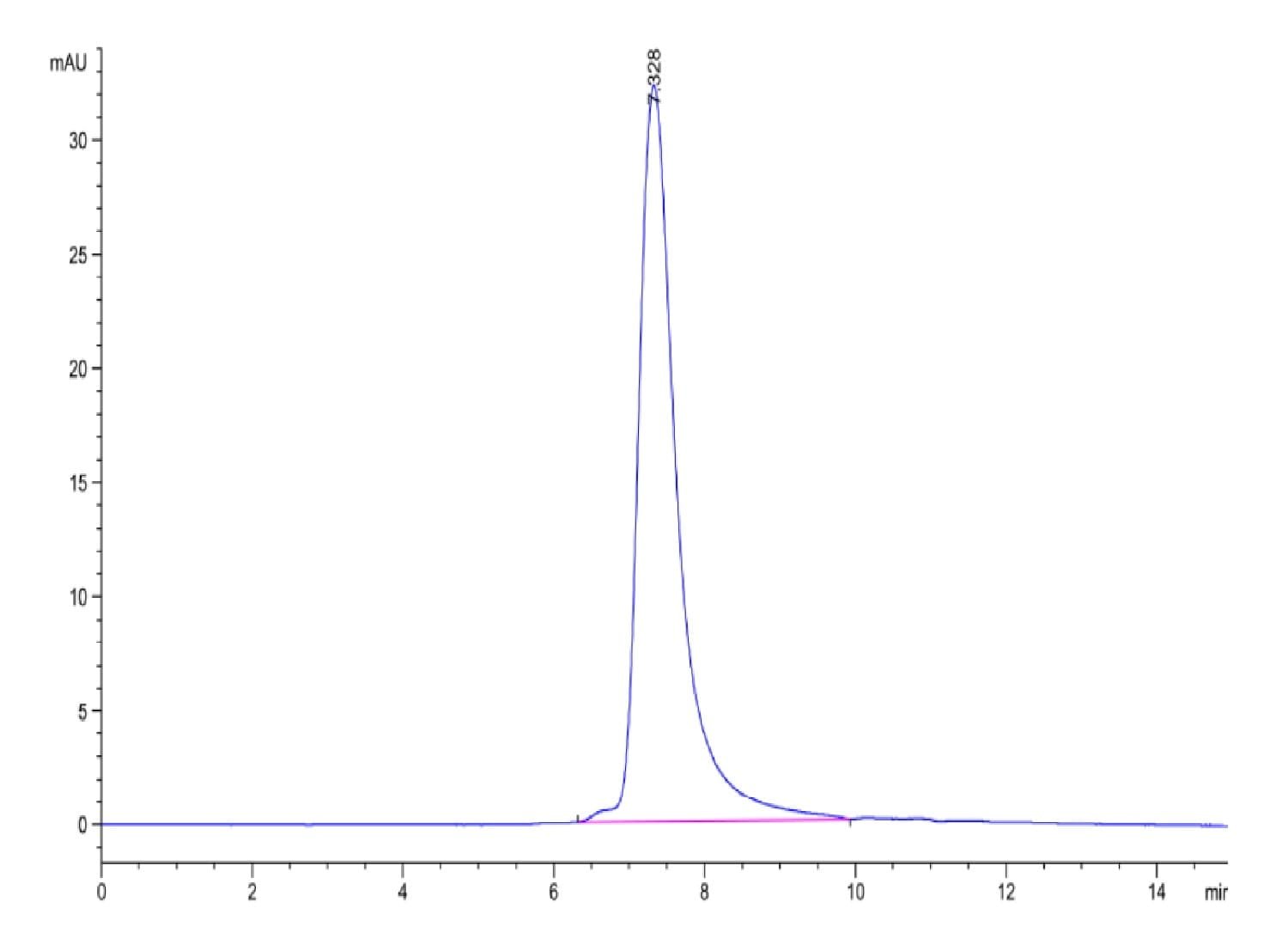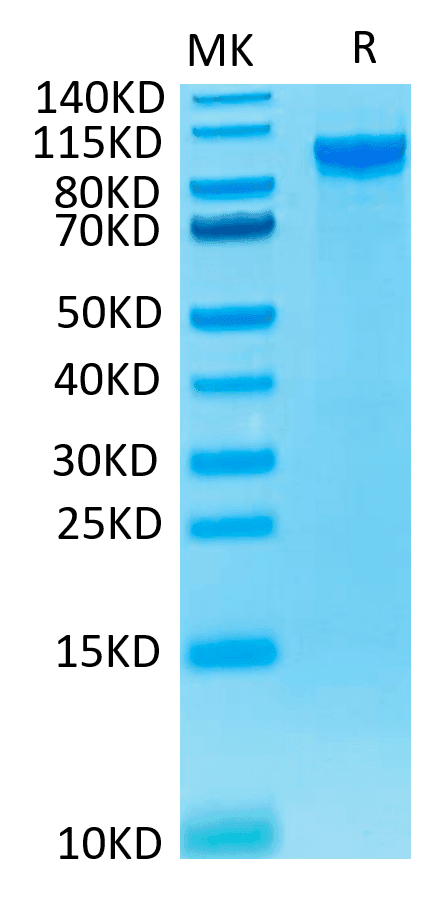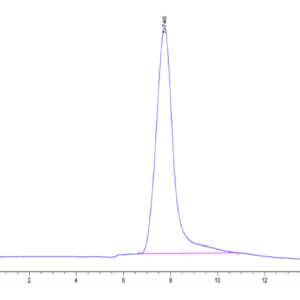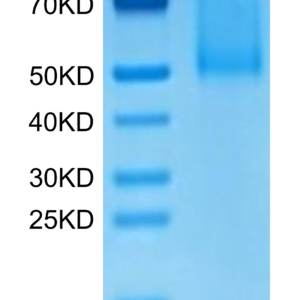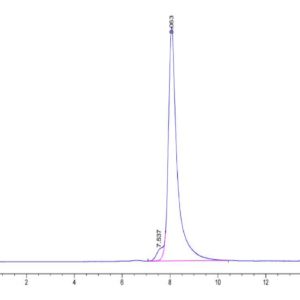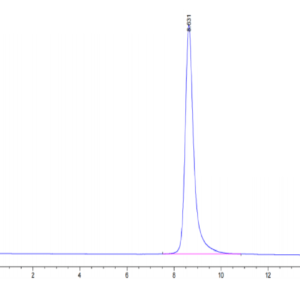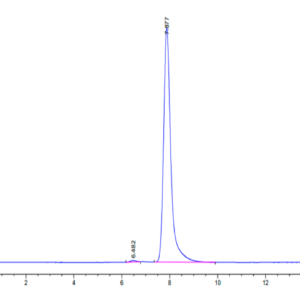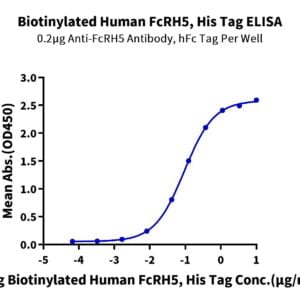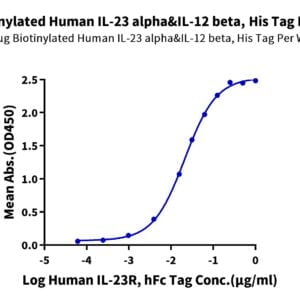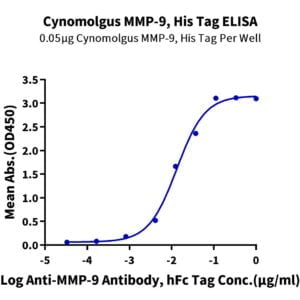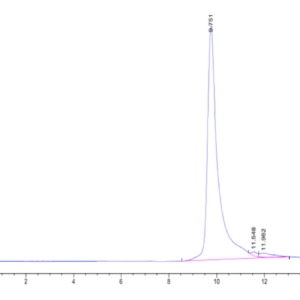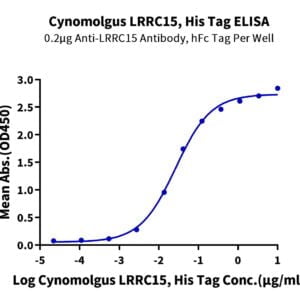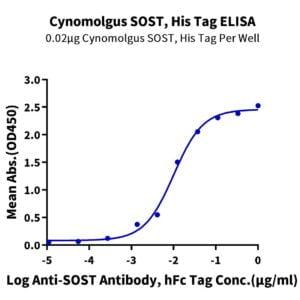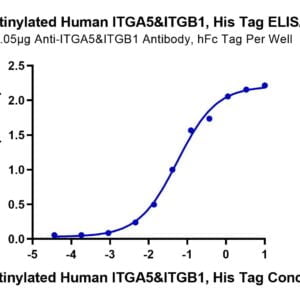| Weight | 1 lbs |
|---|---|
| Dimensions | 9 × 5 × 2 in |
| accession | NP_001035181 |
| express system | HEK293 |
| product tag | N-His |
| purity | > 95% as determined by Tris-Bis PAGE;> 95% as determined by HPLC |
| background | Ectonucleotide pyrophosphatase/phosphodiesterase 2 (ENPP2) also known as Autotaxin, is a secreted lysophospholipase D, which hydrolyzes lysophosphatidylcholine (LPC) into Lysophosphatidic acid (LPA). ENPP2 is an essential protein for normal development and its altered expression is associated with various human diseases. |
| molecular weight | The protein has a predicted MW of 94.8 kDa. Due to glycosylation, the protein migrates to 95-115 kDa based on Tris-Bis PAGE result. |
| available size | 100 µg, 500 µg |
| endotoxin | Less than 1EU per μg by the LAL method. |
Human ENPP-2/Autotaxin Protein 4789
$315.00 – $1,050.00
Summary
- Expression: HEK293
- Active: Yes (catalytic)
- Amino Acid Range: Asp49-Ile863
Human ENPP-2/Autotaxin Protein 4789
| protein |
|---|
| Size and concentration 100, 500µg and lyophilized |
| Form Lyophilized |
| Storage Instructions Valid for 12 months from date of receipt when stored at -80°C. Recommend to aliquot the protein into smaller quantities for optimal storage. Please minimize freeze-thaw cycles. |
| Storage buffer Shipped at ambient temperature. |
| Purity > 95% as determined by Tris-Bis PAGE |
| target relevance |
|---|
| Ectonucleotide pyrophosphatase/phosphodiesterase 2 (ENPP2) also known as Autotaxin, is a secreted lysophospholipase D, which hydrolyzes lysophosphatidylcholine (LPC) into Lysophosphatidic acid (LPA). ENPP2 is an essential protein for normal development and its altered expression is associated with various human diseases. |
| Protein names Ectonucleotide pyrophosphatase/phosphodiesterase family member 2 (E-NPP 2) (EC 3.1.4.39) (Autotaxin) (Extracellular lysophospholipase D) (LysoPLD) |
| Gene names Enpp2,Enpp2 Npps2 Pdnp2 |
| Protein family Nucleotide pyrophosphatase/phosphodiesterase family |
| Mass 10090Da |
| Function Hydrolyzes lysophospholipids to produce the signaling molecule lysophosphatidic acid (LPA) in extracellular fluids (PubMed:17208043, PubMed:27780639, PubMed:28414242). Major substrate is lysophosphatidylcholine (PubMed:17208043, PubMed:27780639). Can also act on sphingosylphosphorylcholine producing sphingosine-1-phosphate, a modulator of cell motility. Can hydrolyze, in vitro, bis-pNPP, to some extent pNP-TMP, and barely ATP (PubMed:18175805). Involved in several motility-related processes such as angiogenesis and neurite outgrowth. Acts as an angiogenic factor by stimulating migration of smooth muscle cells and microtubule formation. Stimulates migration of melanoma cells, probably via a pertussis toxin-sensitive G protein. May have a role in induction of parturition (By similarity). Possible involvement in cell proliferation and adipose tissue development (Probable). Tumor cell motility-stimulating factor. Required for LPA production in activated platelets, cleaves the sn-1 lysophospholipids to generate sn-1 lysophosphatidic acids containing predominantly 18:2 and 20:4 fatty acids (By similarity). Shows a preference for the sn-1 to the sn-2 isomer of 1-O-alkyl-sn-glycero-3-phosphocholine (lyso-PAF) (By similarity). |
| Catalytic activity #N/A |
| Subellular location Secreted . |
| Tissues Expressed in brain and adipose tissue. |
| Post-translational modification N-glycosylation, but not furin-cleavage, plays a critical role on secretion and on lysoPLD activity. Secretion requires simultaneous glycosylation on Asn-53 and Asn-410, while probable glycosylation of Asn-410 has a preferential role on lysoPLD activity. Not O-glycosylated.; The interdomain disulfide bond between Cys-413 and Cys-805 is essential for catalytic activity. |
| Target Relevance information above includes information from UniProt accession: Q9R1E6 |
| The UniProt Consortium |
Data
Publications
Publications
| pmid | title | authors | citation |
|---|---|---|---|
| We haven't added any publications to our database yet. | |||
Protocols
| relevant to this product |
|---|
Documents
| # | ||
|---|---|---|
| Please enter your product and batch number here to retrieve product datasheet, SDS, and QC information. | ||
